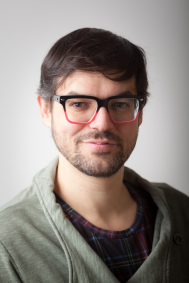Antonin Labossière
M.Sc. in Urban Studies, 2012
Partner at Rayside Labossière
“For me, the contribution to the city goes far beyond the built environment. It’s in the way people live and occupy space that’s interesting. There are so many other ways to read a city, not just through architectural heritage, but through a more complete understanding of its cultural particularities, identity and social dynamics.”
Antonin Labossière is deeply committed to the challenges of architecture, urban planning and urban design in a metropolis. Right from the start of our interview, his enthusiasm is palpable, and we soon realize the unconditional love he has for these attributes that characterize a city.
With a degree in architecture from the Université de Montréal, Antonin was keen to broaden his horizons and enrich his architectural practice when, in 2007, he undertook a master's degree in urban studies at the Institut national de recherche scientifique (INRS) at the Centre Urbanisation Culture Société under the direction, in 2010, of Professor Annick Germain. “Initially, I wanted to broaden my scope to include other perspectives and disciplines, but I didn't really understand what urban studies was. I was quickly won over by the program. Essentially, it allowed me to see the city differently.” Thanks to its range of themes, the urban studies program took him completely elsewhere, and that's what he appreciated most. Questions about the city in its very broad identity quickly caught his attention and fed into another important aspect of his work.
Antonin recalls, “It was a real joy to have this chance to listen to my teachers and to have the privilege of taking this time to learn.” He also greatly appreciated getting feedback from younger students who had a different view of the city. A view he describes as “more intense and engaged”, even if he describes himself as “very involved”, given the nature of his work. These reflective positions gave him perspective and a greater appreciation of the work he was doing with community organizations, his clients. Seeing a city in a way other than through its built environment also encouraged him to think about the city differently. The complexity of a city necessarily gives rise to debate and questioning, and Antonin was fortunate to be concretely involved in these actions. This gave him a greater appreciation of his work, which coincided very well with the relationship he had with all Rayside Labossière's clients. The mission of this Montréal-based architecture firm is focused on social architecture, community planning and sustainable development, and mainly supports social justice projects. It also encourages architects to take a greater interest in urban phenomena, thereby fostering a better understanding of the needs of city dwellers, as well as improving inclusive and responsible design in architectural practice.
Any advice for urban studies students? “It would be to have a benevolent reading of the city. The richness of the city lies in its layers of interpretation, and students shouldn't hesitate to add their own interpretations. The city can be intimidating, both in its size and in its dynamism. We shouldn't be afraid to add our own colors.” Antonin also stresses the need to take the pulse of the city in real time, to take the time to understand, to multiply the points of view and appreciations we have of the city.
In conclusion, Antonin sums up: “You've got to love the city. It doesn't matter how wealthy you are, or how long you've lived there. You fall in love with a person, a thing, even a city. Don't hesitate to dialogue with it. The recipe is easy, but we sometimes forget the basic ingredients.”
[Interviewed in June 2023.]

